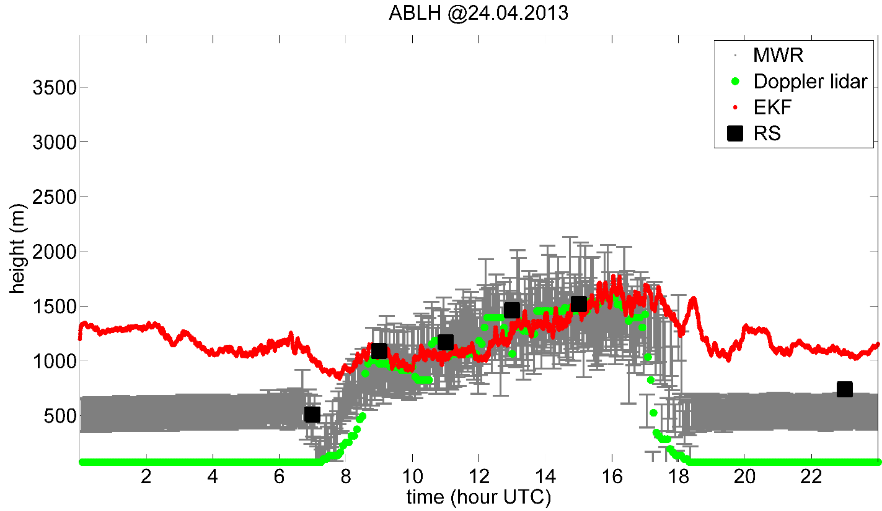The last years have brought a rapid development in instrumental techniques, i.e. lidar, radar, radiometry, that have great potential to monitor atmospheric composition and dynamics in unprecedented detail. Such instrumentation is urgently needed to address important topics related to climate change, numerical weather forecasting, and atmospheric pollution.
In this context, CommSensLab has participated in ITaRS, Marie Curie – Initial Training Network (ITN) (coord. Univ. of Cologne) under the FP7 for Research and Technological Development of the European Union (EU), aimed at training early-stage and experienced researchers in the field of Atmospheric Remote Sensing. ITaRS brought together a group of universities, research organisations and high-tech companies from different disciplines (meteorology, geosciences, physics, electrical engineering, mathematics) with the aim to foster training and further development in the area of remote sensing of the atmosphere.


Fig 1. Synergetic atmospheric remote sensing (24-04-2013, Jülich, Germany). (Top) (a) Colorplot of the attenuated backscatter profile measured by the Jenoptik CHM 15K Nimbus ceilometer (colorbar in [a.u.]). ML refers to Mixing Layer, RL to Residual Layer, SBL to Stable Boundary Layer, CI to Capping Inversion and EZ to Entrainment Zone (labels superimposed for visual reference). (b) Multi-instrument observation of the atmospheric boundary layer. (Red trace) Ceilometer-based adaptive estimates of the ABLH using an Extended Kalman Filter (the filter correctly identifies the mixing-layer height (MLH) only between the 9-17h time interval). (Green trace) Doppler-lidar measured MLH. (Grey trace) Microwave radiometer (MWR) MLH estimates and related errorbars. (Black squares) Radiosonde-derived ABLH. Source: U. Saeed, “Atmospheric-Boundary-Layer Height Retrieval using Microwave Radiometer and Lidar Sensors: Algorithms and Error Estimation,” Ph.D. thesis, UPC (advisors: Profs F. Rocadenbosch and S. Crewell).


